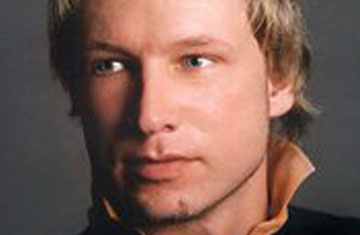
Anders Behring Breivik: a lone — meticulous — attacker
(2 of 2)
By time he was arrested Friday evening, Breivik, it is believed, killed 84 people on the island of Utoeya and at least seven in the Oslo bombing. On Saturday, police were still combing the woods and searching the lake for bodies. A van containing undetonated explosives was found near the lake. As Norwegians seek to understand what happened, a few details about Breivik are emerging that suggest he sought to make his rampage more similar to the 1995 Oklahoma City bombing by Timothy McVeigh, in which 168 people were killed, than to the al-Qaeda attacks on Sept. 11, 2001.
Norwegian police describe Breivik as a conservative, right-wing extremist and a Christian fundamentalist. Norwegian media have reported that he attended the Oslo Commerce School and describe him as a conservative and a nationalist. His views are hard to characterize. He appears to hate communists and Muslims and harbors right-wing views. But he is not a neo-Nazi. Breivik was a regular reader of right-wing websites and blogs like Gates of Vienna and was a follower of the blogger Fjordman. On a Facebook page that Breivik set up days before the attacks, he cited an eclectic group of heroes including Winston Churchill, Dutch right-wing populist Geert Wilders and Norwegian anti-Nazi resistance fighter Max Manus. Breivik appears to see himself as a mercenary in a war against the spread of Islam in Europe as well as against socialism and foreign domination of Norway. Like the contributors to Gates of Vienna, Breivik appears to be an adherent of the right-wing conspiracy theories about Eurabia: the idea that Muslims are infiltrating European society with the goal of domination. The Gates of Vienna website, for example, carries a picture of old Vienna with this caption: "At the siege of Vienna in 1683 Islam seemed poised to overrun Christian Europe. We are now in a new phase of a very old war."
"No one knows exactly what triggered him," Magnus Ranstorp, a terrorism expert at the Swedish National Defense College, tells TIME.com. "But he seems to see himself on an apocalyptic mission to warn Europe about the dangers of Eurabia."
Ranstorp has sifted through hundreds of Breivik's blog postings to try to learn more. In 2003, he says, Breivik inquired online about a Beretta handgun, but it is unclear from the posts whether he wanted to obtain the weapon or ever did so. Although the attacks in Oslo and Utoeya were precisely planned and executed, Breivik does not appear to ever have had military training. On his Facebook site, which has been shut down, Breivik says he enjoys playing computer games such as World of Warcraft and Modern Warfare 2. Other hobbies include hunting. He lists his hometown as Oslo.
Breivik planned his Oslo attacks with the same care he applied to his Utoeya ambush. He needed several tons of fertilizer to construct his car bombs; Norwegian authorities believe he obtained it without raising suspicion by moving from Oslo to a small rural town called Rena in June or July, where he set up a farm under the name Breivik Geofarm. He is believed to be the sole proprietor and may have used the farm as a cover to obtain the bomb material.
Just as police have turned up no evidence of an Islamic plot, authorities have failed to find evidence linking Breivik to a specific right-wing group. Norway and Sweden experienced a surge of neo-Nazi violence in the 1990s, but programs set up to defuse the situation were quite successful — one reason even Europol, in its latest report on right-wing extremism in Europe, failed to see any warning signs that such an attack was possible. Police can only speculate as to Breivik's motives and the full extent of the operation, but the evidence so far points to him as a lone, perhaps deranged attacker with right-wing views who set out to target a symbol of the government.
"There is an Oklahoma comparison," Hagai M. Segal, a terrorism expert with New York University in London, tells TIME.com. "That could be an incredibly serious development. I am skeptical that there is a larger right-wing group connected to this, but it wouldn't surprise me if you had a small cell. It is extremely hard to do something like this by yourself."
In travel guides, Norway is often described as the most beautiful place on the planet, a tiny nation of 4.8 million with an enormous countryside of natural beauty, icy mountains and deep, dark fjords, northern lights and the midnight sun. As they count their losses in the bitter days and months ahead, Norwegians will long for a more innocent past. Utoeya is now a symbol of what has changed, says Prime Minister Stoltenberg: "A paradise island has been transformed into a hell."
